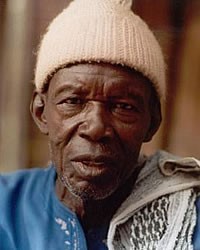Tal in Nigeria

Photo Source:
Copyrighted © 2025
GoWestAfrica All rights reserved. Used with permission |
Send Joshua Project a map of this people group.
|
| People Name: | Tal |
| Country: | Nigeria |
| 10/40 Window: | Yes |
| Population: | 37,000 |
| World Population: | 37,000 |
| Primary Language: | Tal |
| Primary Religion: | Ethnic Religions |
| Christian Adherents: | 30.00 % |
| Evangelicals: | 7.00 % |
| Scripture: | Portions |
| Ministry Resources: | No |
| Jesus Film: | Yes |
| Audio Recordings: | Yes |
| People Cluster: | Chadic |
| Affinity Bloc: | Sub-Saharan Peoples |
| Progress Level: |
|
Introduction / History
The Tal people are indigenous to the Jos Plateau region of North-Central Nigeria. The Jos Plateau is a highland region, home to many small ethnic groups that settled thousands of years ago. Tal ancestors arrived in the plateau well before major migrations of Hausa, Fulani, or Kanuri people (i.e., before 1000 AD). Hills offered natural protection from invasions, slave raids, and conflicts. Fertile volcanic soils made it ideal for farming yams, millet, and sorghum, sustaining small communities. Early Tal communities migrated within the plateau region from hinterlands to valleys near rivers for farming. Others migrated to the hills and ridges for protection.
The Tal language belongs to the Plateau language group, which is part of the Benue-Congo branch of the Niger-Congo language family. Linguistic similarities with nearby tribes suggest a common ancestry for Tal and neighboring groups, possibly 5,000–7,000 years ago, before recorded history in Nigeria.
Tal people, like many Middle Belt tribes, were agriculturalists and hunters, relying on yams, millet, sorghum, cattle and goats for their food supply. Oral traditions preserved stories of early ancestors, migration, and conflicts with neighboring groups. Traditional governance often used elders' councils and village heads, similar to other Plateau communities.
Tal ancestors are part of Central African Highland populations, which link to Ancient Niger-Congo speaking peoples who spread across West and Central Africa. Indigenous highland communities resisted assimilation during the expansion of Hausa-Fulani empires (14th–19th centuries). This makes the Tal part of one of Africa's most ancient continuous populations, preserving unique culture and language over thousands of years.
What Are Their Lives Like?
Known for their skill and bravery as hunters, the Tal live off what they hunt and what they raise in their fields. Parents often give their babies names that reflect places and events such as names of villages, wars, famine, and even market days which refer to the situation, place or time when the baby was born.
Until recently, they have had no electricity and poor educational and medical facilities. Although they live harmoniously with neighboring groups, others look down on them because of their language and culture. However, for the most part, they have maintained identity as a people and not assimilated to the dominant culture around them.
What Are Their Beliefs?
A Nigerian man first introduced Christianity to the Tal people in the early 1960s. However, most Tal, especially the older people, practice traditional religion. Even many of those who are nominally Christian mix animistic beliefs and practices with their faith. Although a major world religion in the area has not yet made inroads into among the Tal people, it appears that traditional religious beliefs and practices are gaining ground.
What Are Their Needs?
Today, those in rural areas need better medical facilities. They are out of range of hospitals in most cases.
Prayer Points
Pray for the Holy Spirit to move in Tal families and villages, drawing hundreds to the King of kings.
Pray for the Lord to do miracles among them that will make them consider the claims of Christ.
Pray for the Christians among them to shine with the light of Christ, drawing others to the hope that they can have.
Pray that soon Tal Christians will become part of God's global effort to bring Christ to the nations.